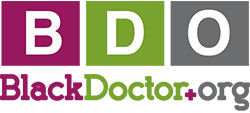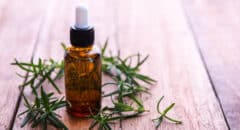
Understanding the root causes and appropriate interventions is essential for effective, inclusive, and culturally sensitive hair growth management.
Understanding Hirsutism in Black Women
What is Hirsutism?
Hirsutism occurs when individuals who typically produce less body and facial hair abruptly develop a more traditionally “male-pattern” distribution, such as coarse hair on the upper lip, chin, chest, or back. This condition is often fueled by androgen excess or sensitivity.
Rates appear elevated among Black and African American women, though studies on prevalence and experience are limited. Much of the medical understanding has been shaped by predominantly white populations, with insufficient focus on how hirsutism is experienced, understood, and treated within Black communities.
Causes & Hormonal Links
The most frequent underlying cause is Polycystic Ovary Syndrome (PCOS)—a complex endocrine condition that leads to elevated androgens (like testosterone and DHEA), irregular periods, ovarian cysts, and insulin resistance. These hormonal shifts disrupt hair follicle growth cycles, triggering more persistent, coarse hair.
Other causes include adrenal disorders (e.g., Cushing’s syndrome, congenital adrenal hyperplasia), medication-induced hormone changes, and rare tumors. Sometimes, no identifiable cause is found—known as idiopathic hirsutism.
PCOS, Hormones, & Hair: Connecting the Dots
Role of Androgens
Androgens spur hair follicle enlargement and elongation phases, producing thicker terminal hair growth. In susceptible individuals, androgen-receptor sensitivity amplifies this, making even small hormone elevations impactful.
PCOS uniquely boosts androgen production. Studies show about 60–70 percent of women with PCOS experience hirsutism, and Black women may have even higher rates, though cultural and diagnostic disparities complicate data collection.
Insulin Resistance & Inflammation
Insulin resistance, a key feature of PCOS, elevates insulin and IGF-1 levels, which further stimulate ovarian androgen production. Chronic low-grade inflammation—widely reported in both PCOS and obesity—provokes oxidative stress, deepening hormone imbalance and hair growth dysregulation. Lifestyle modifications become essential in this context.
How Diet & Lifestyle Impact Hair Growth
Approach hirsutism holistically: consider not just biology, but food, movement, stress, and environment.
Anti-Inflammatory, Low-Glycemic Diet
- Low glycemic index eating—focusing on fiber, whole grains, legumes, and non-starchy vegetables—helps manage blood sugar levels.
- Research shows reduced insulin spikes can lower androgen production over time.
- Consideration: “Western” low-fiber, high-processed-carb diets have been linked to PCOS symptoms.
Weight & Adiposity
Even modest weight loss (5–10 percent) in overweight individuals can significantly lower insulin and androgens, improving hair growth and menstrual function. These recommendations also apply to Black women, who often face weight management challenges amid structural barriers.
Physical Activity & Sleep
- Regular exercise improves insulin sensitivity, reduces inflammation, and improves mood.
- Adequate sleep regulates cortisol and metabolic hormones; chronic sleep deficit worsens hormone imbalance.
Stress Reduction
Chronic stress boosts cortisol, which can indirectly affect testosterone and estrogen. Practices such as mindfulness, therapy, journaling, and community support are essential for maintaining hormonal and mental health.
Top Natural Remedies: Spearmint Tea, Turmeric, and Saw Palmetto
Here’s a breakdown of herbal approaches that have shown promise in research and anecdotal evidence.
Spearmint Tea
- Mechanism: Anti-androgenic properties that lower free testosterone.
- Key Studies: Drinking 2 cups daily for one month led to ~30% decrease in free and total testosterone; subjective reduction in hair density reported.
- Usage: Brew 1–2 cups daily (use organic, caffeine-free). Safe, but monitor for mint sensitivity or GERD.
Turmeric
- Mechanism: Curcumin reduces inflammation and interacts with estrogen/testosterone metabolism.
- Topical Use: Paste (turmeric + water or rose water) applied 2–3 times weekly may slow hair growth and even out hyperpigmentation.
- Oral Use: 500 mg curcumin extract daily. Potential GI upset or interaction with blood thinners—consult provider first.
Saw Palmetto
- Mechanism: DHT-blocking, similar to pharmaceuticals like finasteride (though milder).
- Benefits: One TikTok-shared PCOS regimen—spearmint + zinc + saw palmetto—reported improved hair reduction over months.
- Usage: Typically 160–320 mg standardized extract daily. Potential GI effects: caution if pregnant/breastfeeding.
Additional Supplements
- Licorice Root: Potential testosterone-lowering effect; preliminary evidence.
- Zinc: Supports hormone balance. Suggested dose: 25–30 mg daily.
- Flaxseeds: Rich in lignans; may support balanced hormones.
Note: Always consult a healthcare provider before starting supplements, especially when combining multiple agents.
Safe Skincare for Removing Hair Without Damaging Melanin-Rich Skin
Black and deeply pigmented skin has distinct vulnerabilities—unique melanin-rich structures that require extra care to avoid hyperpigmentation and scarring.
Depilation vs. Epilation
- Depilatory methods: shaving, chemical creams—quick but often cause ingrown hairs or stubble.
- Epilation methods: waxing, sugaring, tweezing, threading—longer-lasting but more irritation risk.
- Professional removal: Laser and electrolysis offer hair reduction along with safety considerations for darker skin tones.
Laser Hair Removal
- Best for dark skin: Nd: YAG laser (1064 nm); bypasses surface melanin, reducing burn and hyperpigmentation risk.
- Safety tips: Patch test, choose experienced providers, avoid retinoids/BHAs pre-treatment.
- Risks: Requires 4–6 sessions, delays in regrowth, but not permanent removal. Post-inflammatory hyperpigmentation remains a risk if precautions are neglected.
Electrolysis
- Only FDA-approved method for permanent hair removal.
- Effective on all hair colors, including gray.
- Time-intensive and requires skill, but suitable for small, sensitive areas (chin, etc.).
At-Home & Cosmetic Approaches
- Bleaching can be a non-invasive cover-up (lasts ~4 weeks); suitable if hair is light enough.
- Exfoliation with glycolic/salicylic acids helps prevent ingrown hairs.
- Post-hair-removal care: topical aloe, hydrocortisone, sunscreen to reduce inflammation and hyperpigmentation.
Tailored Tips for Melanin-Rich Skin
- Choose depilatory products labeled “for sensitive or dark skin.”
- Avoid aggressive scrubs or waxing frequently.
- Prioritize hydration and barrier repair with ingredients like shea butter, hyaluronic acid, and ceramides.
- Always patch-test new treatments—even store-bought laser devices.

Mental Health Matters: Coping with Hair Growth–Related Shame or Anxiety
Excessive hair growth carries real emotional and psychological burdens, particularly for Black women navigating intersectional pressures of beauty standards and cultural narratives.
Shame, Identity & Social Pressure
- Studies show hirsutism correlates with depression, low self-esteem, and social anxiety, especially when hormone imbalance also upsets menstrual health.
- Media often centers whitened beauty ideals, lacks information about hair diversity among Black women, amplifying self-stigma.
Community & Culturally Affirming Care
- Black women report better mental outcomes when hair, skin, and identity are normalized and accepted, whether via therapy or peer groups.
- Exploring hair removal/alignment becomes a personal, not performance-based, choice.
Therapeutic Strategies
- Cognitive Behavioral Therapy (CBT) helps challenge internalized shame.
- Mindfulness & self-compassion practices ease stress responses.
- Group or peer support, including online communities, provides solidarity and practical tips.
RELATED: Polycystic Ovary Syndrome (PCOS): What You Don’t Know, But Should
When to Seek Medical Advice: Natural Isn’t Always Enough
Natural approaches can support, but sometimes aren’t enough. Signs you should consult a professional:
- Rapid or severe hirsutism (e.g., sudden facial hair growth)
- Signs of virilization: deepened voice, male-pattern baldness, clitoromegaly
- Menstrual irregularities, acne, or weight gain—often linked to PCOS
- Failed natural and cosmetic interventions after 3–6 months
- Other alarming health changes, like pelvic pain or a swollen abdomen
Medical Options
-
- Oral contraceptives regulate menstrual cycles and lower androgens.
- Anti-androgens (spironolactone, finasteride) block hair growth triggers.
- Topical eflornithine (Vaniqa) slows facial hair regrowth.
- Metformin improves insulin sensitivity in PCOS.
- Combine hormonal treatment with laser hair removal or electrolysis for best results.
A personalized, holistic approach is vital. For Black women, natural remedies can offer hormone balance and secondary benefits (like anti-inflammation and mental health support). Safe hair removal is equally important to protect melanin-rich skin from irritation and pigmentation.
Yet, hirsutism often connects to underlying conditions like PCOS. A thoughtful partnership with healthcare providers—who respect your identity, skin tone, and goals—can guide effective medical interventions and mental wellness strategies.
Natural solutions are robust, but they thrive best in integrative care. Whether you choose herbal remedies, lifestyle changes, or professional treatments, center your experience, biology, and cultural context, and always prioritize physical and mental safety.









